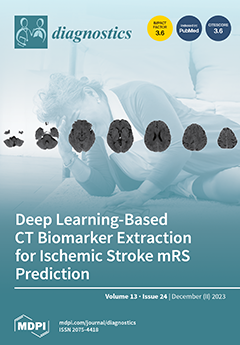Open AccessReview
Focus on Paediatric Restrictive Cardiomyopathy: Frequently Asked Questions
by
Mattia Zampieri, Chiara Di Filippo, Chiara Zocchi, Vera Fico, Cristina Golinelli, Gaia Spaziani, Giovanni Calabri, Elena Bennati, Francesca Girolami, Alberto Marchi, Silvia Passantino, Giulio Porcedda, Guglielmo Capponi, Alessia Gozzini, Iacopo Olivotto, Luca Ragni and Silvia Favilli
Viewed by 3309
Abstract
Restrictive cardiomyopathy (RCM) is characterized by restrictive ventricular pathophysiology determined by increased myocardial stiffness. While suspicion of RCM is initially raised by clinical evaluation and supported by electrocardiographic and echocardiographic findings, invasive hemodynamic evaluation is often required for diagnosis and management of patients
[...] Read more.
Restrictive cardiomyopathy (RCM) is characterized by restrictive ventricular pathophysiology determined by increased myocardial stiffness. While suspicion of RCM is initially raised by clinical evaluation and supported by electrocardiographic and echocardiographic findings, invasive hemodynamic evaluation is often required for diagnosis and management of patients during follow-up. RCM is commonly associated with a poor prognosis and a high incidence of heart failure, and PH is reported in paediatric patients with RCM. Currently, only a few therapies are available for specific RCM aetiologies. Early referral to centres for advanced heart failure treatment is often necessary. The aim of this review is to address questions frequently asked when facing paediatric patients with RCM, including issues related to aetiologies, clinical presentation, diagnostic process and prognosis.
Full article
►▼
Show Figures






